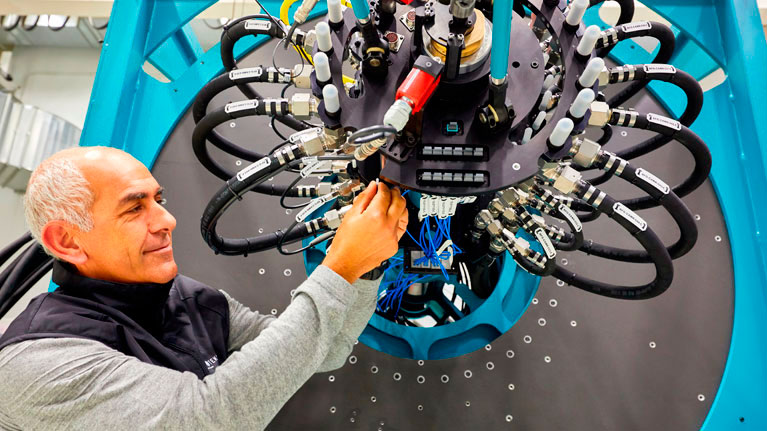Ultra-precision technology to photograph outer space
The technology centre is to develop monitoring and safety systems for the world´s most advanced telescope, the so-called the Large Synoptic Survey Telescope (LSST) to be commissioned in Chile in 2020.

The ultimate goal of the Large Synoptic Survey Telescope (LSST) is to fully reveal all the sky that is visible from the Earth. IK4-TEKNIKER, in fact, is playing an outstanding role in this ambitious international project.
The technology centre´s extensive expertise in the field of ultra-accuracy has served to underpinned its role as an outstanding reference supplier to major international scientific facilities. The LSST, moreover, represents a very big challenge for the organisation as monitoring and safety systems can only incorporate cutting-edge technology.
Together with the engineering firm GHESA-Empresarios Agrupados, responsible for developing the telescope´s main structure, IK4-TEKNIKER is to design and develop control and safety systems, provide camera cable rotation and protective covers for the mirrors used on this outstanding state-of-the-art scientific facility.
One of the main difficulties researchers from the centre will have to address is related to the high level of accuracy and dynamics required by movements involving the telescope´s customised main axes (azimuth and elevation).
The goal is to photograph different sectors of visible outer space in the shortest possible amount of time. The control system, therefore, must be able to attenuate any vibrations resulting from axial movement as speedily as possible to then immediately photograph the target area.
In addition to the control system, IK4-TEKNIKER is developing a safety device to ensure that the telescope is operated safely, not only to safeguard the investments made but also to provide a safe work environment for operators. The system monitors travel limits, excess speed settings, emergency pushbuttons and correct component operation.
Within the scope of this project, the technology centre has contributed its expertise to design and develop the camera´s cable rotator, a mechatronic device that winds or unwinds any of the elements required by the camera (power and communication cables, fibre optics and cooling hoses).
When actuated, this device (featuring a ±90º range of rotation) prevents the machine from having to drag cables and hoses whilst in motion, thus removing stresses completely and ensuring that nothing interferes with camera operations.
This device also features a safety system that, in the event of a synchronism error between the rotation of the camera and the cable rotator greater than 3º, activates the control system to guarantee overall system integrity.
IK4-TEKNIKER is also to provide the mobile protection cover used for the main mirrors by designing another innovative mechatronic system to protect optical components against falling objects, rain or dust.
LSST will feature a mirror measuring 8.4 metres in diameter (same width as a tennis court) with enough capacity to examine the entire visible sky. Consequently, it is to be fitted with equipment to scan the sky every 3 or 4 nights and deliver a picture that is forty times larger than the size of a full moon thanks to a 3,200 megapixel camera. The telescope, to be installed at an altitude of 2,700 metres, will analyse images in real time and detect any significant variations, from supernova explosions in other parts of the Universe to asteroids that might be heading towards the Earth.
It has been estimated that construction work for this telescope, to be commissioned in 2020 at Cerro Pachón, in the Chilean desert of Atacama, will cost approximately 700 million dollars. This is the final outcome of a close public-private sector cooperation that has involved more than one hundred astronomers, physicists and engineers whose joint work will allow this project to become a reality and make a giant leap in terms of gathering more knowledge on how stars behave.
